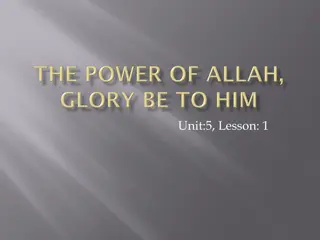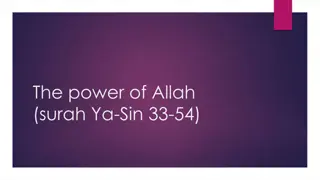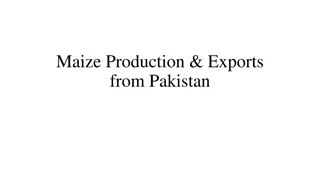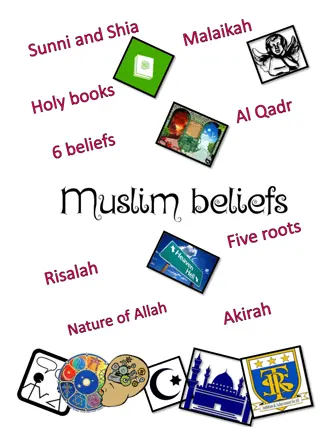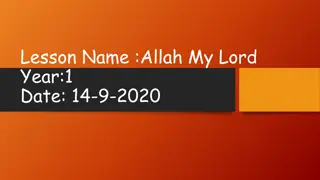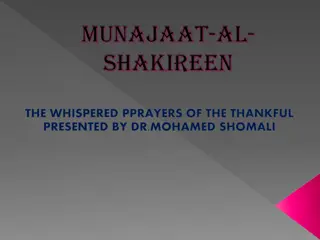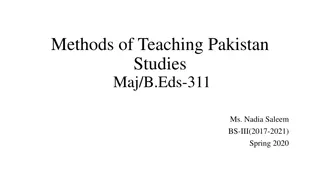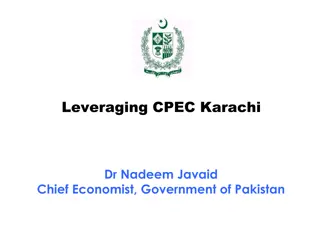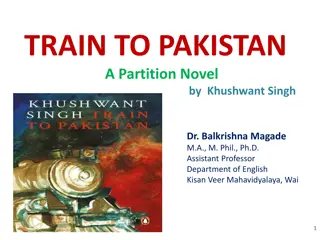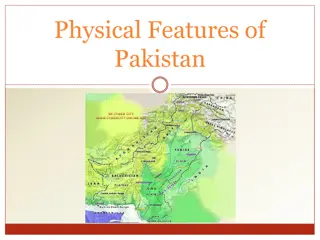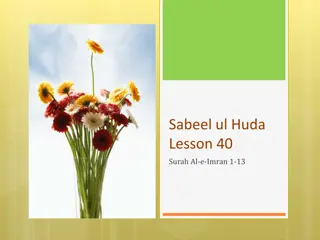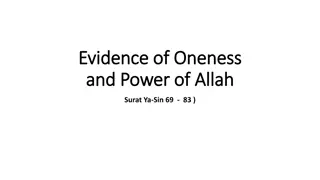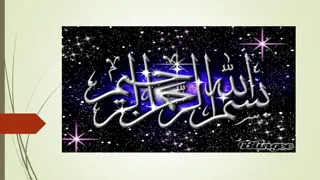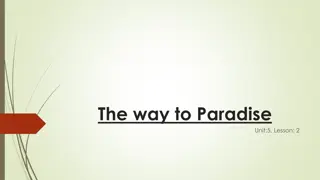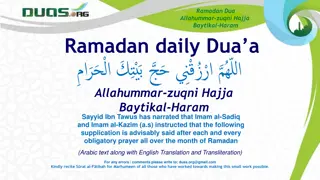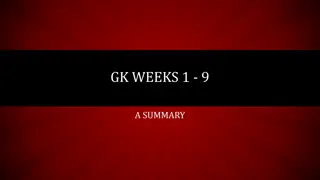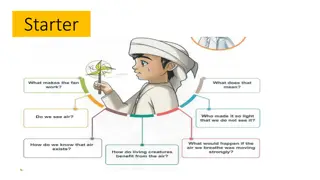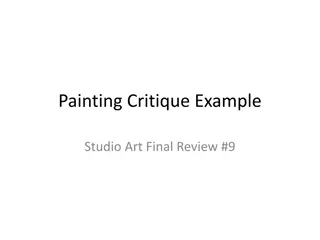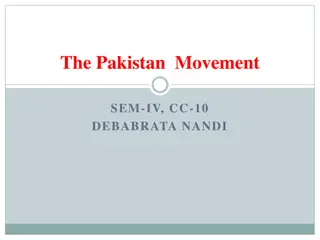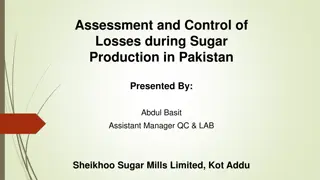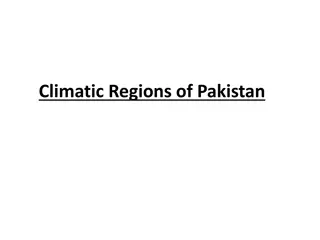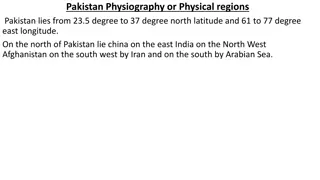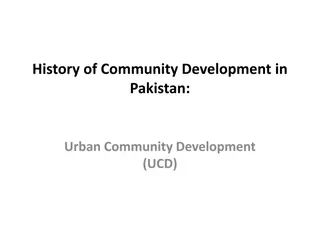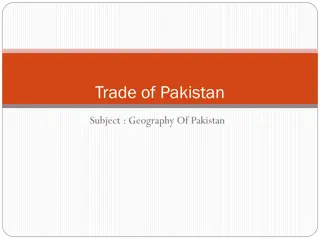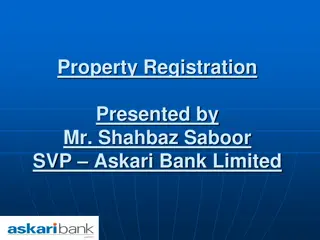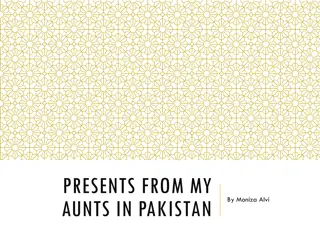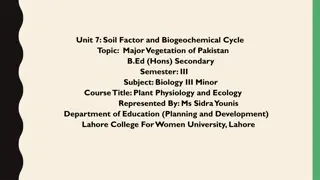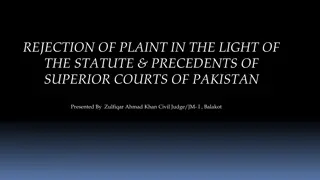Ustad Allah Bux - Pioneer of Modern Landscape Painting in Pakistan
Ustad Allah Bux, also known as Allah Baksh, was a renowned Pakistani painter who excelled in expressing folklore and pastoral life of Punjab through his artwork. He established himself as a master of modern landscape and figurative painting, drawing inspiration from Western styles and incorporating local themes. His contributions to the art scene of Pakistan are significant, as he was among the first to initiate landscape and figurative painting in the country. Through his depictions of rural life and subjects from Hindu and Persian mythology, Ustad Allah Bux left a lasting legacy in the art world.
Download Presentation

Please find below an Image/Link to download the presentation.
The content on the website is provided AS IS for your information and personal use only. It may not be sold, licensed, or shared on other websites without obtaining consent from the author. Download presentation by click this link. If you encounter any issues during the download, it is possible that the publisher has removed the file from their server.
E N D
Presentation Transcript
USTAD ALLAH BUX 1895-1978 Art in Pakistan BFA-IV (Visual Arts) Class Incharge: Ms. Farah Khan Institute of Design & Visual Arts, LCWU
USTAD ALLAH BUX Ustad Allah Baksh (1895-1978) is one such genius who established himself as a marvelous self- taught master and a true exponent of expressing folklore and pastoral life of the fertile plains of Punjab. He is considered as the legendary pioneer painter regarding modern landscape and figurative painting in Pakistan. He is best known today for his depictions of rural life in the country and for subjects from Hindu and Persian mythology. He developed keen interest in the Western-style painting with more precise perspective and proportion; suggesting deep consideration of realism and worked in oils and on large-scale canvases, a technique that travelled to the sub-continent from Europe. In his pursuit to learn the non-traditional modern style of painting, Allah Bakhsh copied many works of the Western masters and tried out his own color palette and local themes which, in its early execution, seems a poor replica of the European masterpieces. However, with the passage of time and maturity of skill, the artist evolved his technique and perception of the subject up to a level that is today known as the Allah Baksh style. He is regarded as the first one in the art scene of Pakistan who initiated landscape and figurative painting in Pakistan before the arrival of any other painter.
USTAD ALLAH BUX Allah Bux was a follower of the Western academic style, and was given the title of Ustad (a maestro) in regard to his skill and accomplishments as a painter. Equally at ease in watercolor and oil painting, Allah Bux worked from observable phenomena which he later modified in the studio. The artist s idealistic landscapes and portraits enjoyed great admiration and success. Whenever the folk culture and life of Punjab (Pakistan) will be talked about, the name of Ustad Allah Baksh will stand out prominently. He was the man who immortalized rural life, and specially of the Punjab the land where he was born in 1885 in the small town of Wazirabad. Ustad Allah Baksh was lucky to have found Master Abdullah, a great maestro of his own time and a master of miniature art. He started learning from his master at the age of five and by the age of fourteen he had become an artist of his own style. He also learnt the art of painting from Master Meeran Bakhsh Naqash, a known teacher and painter and was also the Vice Principal of the Mayo School of Arts, now the National College of Arts Lahore. He started his career at the young age as signboard painter, and then found his way to railway s workshop in Moghalpura Lahore as carriage painter. For some time, he also worked for Agha Husher s theatrical company, painting background screens. By 1919, he had become a fine art painter and took on the profession as a commercial artist.
USTAD ALLAH BUX He also painted characters of Hindu mythology and also participated in art exhibitions at Bombay and Calcutta. His work being unique and rich in heritage won him many awards and honors. Maharaja of Patiala, impressed by his work, invited him to his palace in 1937 to paint exclusively for him. Allah Baksh stayed there till the partition of the British India, after which he came back to Lahore and stayed here for the rest of his life. Once settled in the newly formed Pakistan, Allah Bux looked to the regional history of his homeland of Punjab for inspiration. He created idyllic scenes of villagers, festivities and folk tales by painting the beautiful landscape of Punjab, its people and village life that ran into his veins since childhood. His post-partition work reflected the life of rural Punjab in the best possible way. He was the first Pakistani painter to incorporate the genre of landscape painting in his work but with the including of people representing the culture of Punjab. Ustad Allah Baksh s artwork is rich and expressive. His paintings show lots of people and when seen closely, each face gives a different expression, mood and style. All along he had his own distinctive and unique romantic style from which he never transgressed nor anyone else could imitate or replicate. His masterpieces include Sohni Mahiwal, Heer Ranjha, Sohni Dharti, Talism-e-Hosh Ruba, besides painting many festivities and rural scenes of Punjab. His very near-to-life life-size paintings are full of color and life that forces an onlooker to stop in his tracks and appreciate his masterly work of art.
USTAD ALLAH BUX Although his basic theme revolved around his own cultural heritage, he is also said to have been inspired by the classical western paintings, which may be attributed to his extensive movement to Bombay and Calcutta where the British artwork had influenced the local artists. Ustad Allah Baksh had great command in oil painting and equally on painting large canvases. But being an Ustad, he had mastery over other forms of painting and sketching mediums like the water colors, tempera colors, pencil work and even pen and ink. He could even combine different mediums suiting to his aesthetic nature and innovative mind. In 1979, while celebrating the 15th anniversary of the RCD (Regional Cooperation for Development, later re-named as ECO) one of Ustad Allah Bakhsh s painting, titled Village Scene, was selected to appear on the art of Pakistan. For his great artwork and services in the field of art projecting the indigenous folk heritage, he was awarded the prestigious Presidents medal for Pride of Performance. Pakistan Post also acknowledged Ustad Allah Bakhsh while printing a set of stamps to honor the great painters of Pakistan on December 24, 1991. Akbar Naqvi, an art historian shared his views in his book Image and Identity: Fifty Years of Painting and Sculpture in Pakistan by saying that: Within his limits, and with no opportunity to travel abroad, the Ustad succeeded in becoming an artist. He created his own pictorial images from Punjab, its villages, folklore, and even the sky. These attempts to redefine his land were personal statements of good intention .
USTAD ALLAH BUX He also mentioned that: Allah Bux was not just creating a whimsical romanticized scene, he was creating a narrative of a golden age, an innocence pre-dating the war and bloodshed of partition and independence Most of his work was indigenous but analyzing his artistic journey, his work can be characterized within different phases. i) Mythological and Hindu Subjects (most significant were his Krishna Paintings) ii) Crowded Figure Compositions iii) Rural Landscape paintings iv) Punjabi Folk stories v) Cultural Depiction of the Land


